Showing Spotlights 233 - 240 of 330 in category All (newest first):
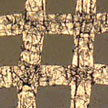 Graphene's piezoresistive effect, combined with its other properties such as ultra-translucency, superior mechanical flexibility and stability, high restorability, and carrier mobility, enables the use of graphene in high-sensitivity strain sensors. Potential application areas for these sensors could be found in flexible display technology, robotics, smart clothing, electronic skin, in vitro diagnostics, implantable devices, and human physiological motion detection - which has been considered as an effective approach to evaluate human health. To demonstrate this application, researchers have now reported on a method to monitor human motions.
Graphene's piezoresistive effect, combined with its other properties such as ultra-translucency, superior mechanical flexibility and stability, high restorability, and carrier mobility, enables the use of graphene in high-sensitivity strain sensors. Potential application areas for these sensors could be found in flexible display technology, robotics, smart clothing, electronic skin, in vitro diagnostics, implantable devices, and human physiological motion detection - which has been considered as an effective approach to evaluate human health. To demonstrate this application, researchers have now reported on a method to monitor human motions.
Apr 30th, 2014
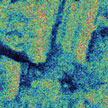 Researchers have proposed an alternative way of making graphene from rice husk. This research, using an ordinary synthetic apparatus and abundant agricultural waste, suggest that low cost graphene materials could now be easily and cheaply synthesized on an industrial scale. Due to its abundance, risk husk has already received much attention as a starting material in generating high-value-added materials such as silica and porous carbon.
Researchers have proposed an alternative way of making graphene from rice husk. This research, using an ordinary synthetic apparatus and abundant agricultural waste, suggest that low cost graphene materials could now be easily and cheaply synthesized on an industrial scale. Due to its abundance, risk husk has already received much attention as a starting material in generating high-value-added materials such as silica and porous carbon.
Apr 7th, 2014
 Individual graphene sheets and their functionalized derivatives have been used to remove metal ions and organic pollutants from water. These graphene-based nanomaterials show quite high adsorption performance as adsorbents. However they also cause additional cost because the removal of these adsorbent materials after usage is difficult and there is the risk of secondary environmental pollution unless the nanomaterials are collected completely after usage. One solution to this problem would be the assembly of individual sheets into three-dimensional (3D) macroscopic structures which would preserve the unique properties of individual graphene sheets, and offer easy collecting and recycling after water remediation.
Individual graphene sheets and their functionalized derivatives have been used to remove metal ions and organic pollutants from water. These graphene-based nanomaterials show quite high adsorption performance as adsorbents. However they also cause additional cost because the removal of these adsorbent materials after usage is difficult and there is the risk of secondary environmental pollution unless the nanomaterials are collected completely after usage. One solution to this problem would be the assembly of individual sheets into three-dimensional (3D) macroscopic structures which would preserve the unique properties of individual graphene sheets, and offer easy collecting and recycling after water remediation.
Mar 26th, 2014
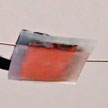 By miniaturizing microbial fuel cells, it becomes possible to build miniature energy harvesters that could power lab-on-chip or point-of-care diagnostics devices independent of any external power source. Because micro-sized microbial fuel cells utilize less electrode area and less liquid fuel volume than their macro-sized counterparts, optimizing the electrodes and the fuel sources are the most important factors in designing a micro-sized MFC for maximum power production.
By miniaturizing microbial fuel cells, it becomes possible to build miniature energy harvesters that could power lab-on-chip or point-of-care diagnostics devices independent of any external power source. Because micro-sized microbial fuel cells utilize less electrode area and less liquid fuel volume than their macro-sized counterparts, optimizing the electrodes and the fuel sources are the most important factors in designing a micro-sized MFC for maximum power production.
Mar 24th, 2014
 Researchers report the fabrication of flexible, durable, and self-assembled graphene textile electrodes for supercapacitors using a novel wet-spinning approach of ultra large graphene oxide liquid crystals followed by heat-treatment to obtain graphene fibers. The key to producing such fibers and yarns is to preserve the large sheet size even after the reduction of GO while simultaneously maintaining a high interlayer spacing in between graphene sheets. These graphene yarns could lead the way to the realization of powerful next-generation multifunctional renewable wearable energy storage systems.
Researchers report the fabrication of flexible, durable, and self-assembled graphene textile electrodes for supercapacitors using a novel wet-spinning approach of ultra large graphene oxide liquid crystals followed by heat-treatment to obtain graphene fibers. The key to producing such fibers and yarns is to preserve the large sheet size even after the reduction of GO while simultaneously maintaining a high interlayer spacing in between graphene sheets. These graphene yarns could lead the way to the realization of powerful next-generation multifunctional renewable wearable energy storage systems.
Mar 7th, 2014
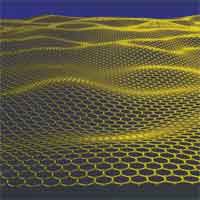 Graphene is undoubtedly emerging as one of the most promising nanomaterials because of its unique combination of superb properties, which opens a way for its exploitation in a wide spectrum of applications ranging from electronics to optics, sensors, and biodevices. In this Nanowerk nanotechnology primer we summarize recent finding in graphene research and show the breadth of graphene applications in such areas as energy, electronics, sensors and many others.
Graphene is undoubtedly emerging as one of the most promising nanomaterials because of its unique combination of superb properties, which opens a way for its exploitation in a wide spectrum of applications ranging from electronics to optics, sensors, and biodevices. In this Nanowerk nanotechnology primer we summarize recent finding in graphene research and show the breadth of graphene applications in such areas as energy, electronics, sensors and many others.
Jan 29th, 2014
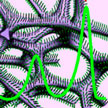 Recently, nanotechnology researchers have begun to work with graphene foams - three-dimensional structures of interconnected graphene sheets with extremely high conductivity. Since graphene foam possesses a high porosity of close to 100%, this offers the opportunity to use it as a scaffold for other nanomaterials to generate synergistic effects. Now, researchers have fabricated vertically aligned ZnO nanowire arrays on 3D graphene foam and used this electrode to detect uric acid in a reliable statistical level from the serum of Parkinson's disease patients.
Recently, nanotechnology researchers have begun to work with graphene foams - three-dimensional structures of interconnected graphene sheets with extremely high conductivity. Since graphene foam possesses a high porosity of close to 100%, this offers the opportunity to use it as a scaffold for other nanomaterials to generate synergistic effects. Now, researchers have fabricated vertically aligned ZnO nanowire arrays on 3D graphene foam and used this electrode to detect uric acid in a reliable statistical level from the serum of Parkinson's disease patients.
Jan 27th, 2014
 Functionalized graphene holds exceptional promise for biological and chemical sensors. In new work, researchers have shown that the distinctive 2D structure of graphene oxide, combined with its superpermeability to water molecules, leads to sensing devices with an unprecedented speed. The team reports the experimental observation of the unparalleled response speed of humidity sensors based on graphene oxide, which are - to the best of the scientists' knowledge - the fastest humidity sensors ever reported.
Functionalized graphene holds exceptional promise for biological and chemical sensors. In new work, researchers have shown that the distinctive 2D structure of graphene oxide, combined with its superpermeability to water molecules, leads to sensing devices with an unprecedented speed. The team reports the experimental observation of the unparalleled response speed of humidity sensors based on graphene oxide, which are - to the best of the scientists' knowledge - the fastest humidity sensors ever reported.
Nov 27th, 2013
 Graphene's piezoresistive effect, combined with its other properties such as ultra-translucency, superior mechanical flexibility and stability, high restorability, and carrier mobility, enables the use of graphene in high-sensitivity strain sensors. Potential application areas for these sensors could be found in flexible display technology, robotics, smart clothing, electronic skin, in vitro diagnostics, implantable devices, and human physiological motion detection - which has been considered as an effective approach to evaluate human health. To demonstrate this application, researchers have now reported on a method to monitor human motions.
Graphene's piezoresistive effect, combined with its other properties such as ultra-translucency, superior mechanical flexibility and stability, high restorability, and carrier mobility, enables the use of graphene in high-sensitivity strain sensors. Potential application areas for these sensors could be found in flexible display technology, robotics, smart clothing, electronic skin, in vitro diagnostics, implantable devices, and human physiological motion detection - which has been considered as an effective approach to evaluate human health. To demonstrate this application, researchers have now reported on a method to monitor human motions.

 Subscribe to our Nanotechnology Spotlight feed
Subscribe to our Nanotechnology Spotlight feed





